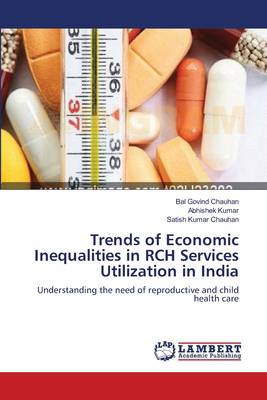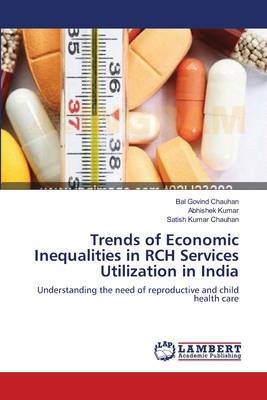
- Afhalen na 1 uur in een winkel met voorraad
- Gratis thuislevering in België vanaf € 30
- Ruim aanbod met 7 miljoen producten
- Afhalen na 1 uur in een winkel met voorraad
- Gratis thuislevering in België vanaf € 30
- Ruim aanbod met 7 miljoen producten
Zoeken
Trends of Economic Inequalities in RCH Services Utilization in India
Understanding the need of reproductive and child health care
Bal Govind Chauhan, Abhishek Kumar, Satish Kumar Chauhan
Paperback | Engels
€ 64,45
+ 128 punten
Omschrijving
Globally estimates of maternal mortality indicate that more than half a million women died due to pregnancy related causes and these deaths are unjust and can be avoided with key health interventions, like provision of antenatal care and medically assisted delivery. The prime objective of book is to examine the trend of economic inequalities in utilization of RCH services in India and to quantify the contribution of selected factors explaining the rural-urban gap in use of RCH care utilization by using the NFHS-1,2,3 data. To fulfill the aforesaid objectives concentration index and non-linear decomposition technique have been used. The study reveals a sluggish increase in the utilization of RCH services in India with respect of place of residence. The trends of economic inequalities in utilization of RCH services are decreasing in both urban and rural areas but the pace of declining is more in rural areas than urban areas during the study period. Decomposition results indicates that economic status of the household is the main contributor in urban-rural differential in receiving the reproductive and child health care services followed by mother education level and media exposure.
Specificaties
Betrokkenen
- Auteur(s):
- Uitgeverij:
Inhoud
- Aantal bladzijden:
- 104
- Taal:
- Engels
Eigenschappen
- Productcode (EAN):
- 9783659544675
- Verschijningsdatum:
- 20/05/2014
- Uitvoering:
- Paperback
- Afmetingen:
- 150 mm x 220 mm
- Gewicht:
- 163 g

Alleen bij Standaard Boekhandel
+ 128 punten op je klantenkaart van Standaard Boekhandel
Beoordelingen
We publiceren alleen reviews die voldoen aan de voorwaarden voor reviews. Bekijk onze voorwaarden voor reviews.








